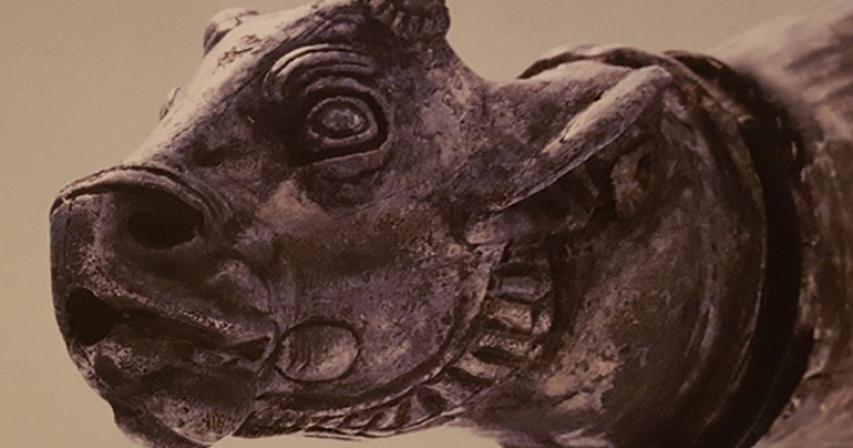Accents From Vassil Bojkov Collection - Silver Horn-Rhyton With A Calf Protome
- 6 years ago

Vasil Bojkov Collection is, without a doubt, one of the world’s top collections that consists of the finest forms and pieces representing the Ancient times and arts. Including over 3000 artefacts, the assemblage is a combination of craftsmanship, reminders of great battles, concepts and world views, religious beliefs and rituals, acts of Gods worshiping, understandings about the afterlife and so on. What is more, Bojkov’s artefacts lead us back to different find spots, production centers, and regions that reveal stories about many other places of historical and cultural value. Every piece belongs to certain artistic traditions, while simultaneously reflecting various cultural domains of the Achaemenid Empire, the Classical Greek world, Thrace, the Hellenistic kingdoms, and others.
Different layers of complexities, questions, and meanings highlight the nature of each piece and one such example is this silver horn-rhyton with a calf forepart. Being extremely elaborate, this is an example that is attributed to Achaemenid toreutics. It is unclear whether it originates in Persia or Asia Minor, but the rhyton is dated to the first quarter of the 5th century BC.
It is important to note that the calf head is accepted as quite typical for the Achaemenid rhyta. Nevertheless, as we can see on the VBC exemplar, there are immature horns – something that is understood to be borrowed from earlier Iranian traditions. Usually, Achaemenid creations of this sort arrive in the representative court style of art ascribed to the Achaemenid empire. Such rhyta are of bent form and exhibit a lot of solidity. They consist of a horn-shaped upper or vessel part and a lower part that has, without exception, an animal protome. Ornamentation is common as well but it could be limited. Generally, the Achaemenid art incorporates palmettes for decoration.
When it comes to the rhyton from Vasil Bojkov Collection, there are two distinct and very pivotal features. The first one is the band of palmettes and five-petalled lotus flowers under the slightly everted rim. The latter floral accents are interconnected by arcs of punched circles. Both floral elements, though, emerge from double contour flattened ovals. The second crucial feature is the junction ring with rivet-heads. Looking at the main part of the horn, we can see that vertical flutes cover it with their upper tips being formed by minute chiselled arcs. For what is known, there are four more silver horn-rhyta that share the same vertical fluting and also date from the 5th century BC. One of them has a galloping horse forepart and was found in Bashova tumulus in Thrace; another is with a goat protome and was also discovered in Thrace (now belongs to VBC); the third example terminates with a lion head (also from Thrace and now part of VBC); and the fourth one has a buck final and is supposed to derive from the Amisos area.
.jpg)
Lastly, going back to the silver horn-rhyton in question, excellent detailed work and superb artistry can be observed on the animal-shaped final of this piece as well. The mouth, nostrils, eyes, as well as the eyebrows of the calf are rendered by chasing. There are even radial lines used for the hair and stylized “beard” on the head that is depicted as parallel lines, starting right under the bent-back ears. Due to these elements, the artefact in question is attributed to a small group of four rhyta also belonging to the remarkable collection of the Bulgarian.
Comments